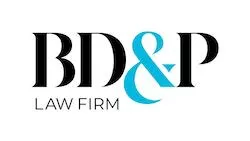- within Strategy, Litigation and Mediation & Arbitration topic(s)
- with Finance and Tax Executives
- in Canada
- with readers working within the Technology, Media & Information and Metals & Mining industries
For companies and counsel navigating intellectual property enforcement across borders, it's critical to understand how litigation strategies vary between jurisdictions. While Canada and the United States share many legal principles, the practical realities of litigating IP rights in the two countries can differ significantly. From procedural rules to available remedies, these distinctions can shape both the risks and rewards of pursuing a claim. Below are five key differences that can materially impact your litigation strategy in Canada versus the United States.
1. Remedies: Differing Approaches to Damages and Injunctions
The monetary remedies on offer between the countries differ. US cases are famous for attracting treble damages (generally when a court awards a plaintiff three times the amount of their actual damages). In Canada, treble damages are not a thing, but punitive damages may be awarded (albeit rarely) if the infringer's conduct is malicious, oppressive and high-handed. A plaintiff in Canada may also elect to recover an infringer's profits, a remedy unavailable in the US. An accounting of the infringer's profits is beneficial as it may allow the plaintiff to avoid financial disclosure and may even result in a higher monetary award than damages.
Injunctions also differ. While both countries apply a similar test for injunctive relief (requiring proof of irreparable harm), Canada offers a presumptive right to a permanent injunction after a successful infringement claim. This contrasts with the US, where post-eBay jurisprudence demands a full equitable analysis.
2. No Jury Trials in Canada
Canadian IP litigation is conducted exclusively before judges, with no jury trials. This is a major departure from the US, where juries frequently make factual findings in IP cases, including in complex patent cases. Without juries, Canadian IP litigation tends to be perceived as more fair, as it is less influenced by inherent biases from a jury. This is often a point of comfort for foreign litigants in Canada: an American company, for example, can bring a patent infringement claim in Canada without fear of a nationality bias.
3. Limited Forum Shopping in Canada
Forum shopping is common in US IP litigation due to jurisdictional variation across district courts. This is not the case in Canada. In Canada, most IP cases are filed in the Federal Court. While IP cases can be heard in the provincial courts,[1] the Federal Court is generally the preferred venue, as the Federal Court has IP expertise, the power to grant Canada-wide injunctions, and ready access to case management.
4. Limited Discovery in Canada
Discovery in Canada is narrower in scope and significantly less expensive than in the US. Parties are generally limited to examining one corporate representative, and experts are not examined until trial. The Federal Court also imposes strict limits on oral discovery based on trial length and encourages early planning and proportionality. These constraints help streamline proceedings and lower litigation costs.
5. Less Risk in Sending Cease and Desist Letters
In the US, sending a cease and desist (C&D) letter can trigger a declaratory judgment action of non-infringement in a hostile forum. In Canada, such strategic pre-emptive litigation is less common, and, more importantly, less threatening since forum shopping is not prevalent. In fact, if an alleged infringer wanted to seek a declaration of non-infringement, they likely would do so in the Federal Court (generally the preferred court for IP proceedings) to also seek to impeach the patent, which only the Federal Court has jurisdiction to do. This makes it safer to send C&D letters in Canada without fear of being "sued first."
The content of this article is intended to provide a general guide to the subject matter. Specialist advice should be sought about your specific circumstances.




